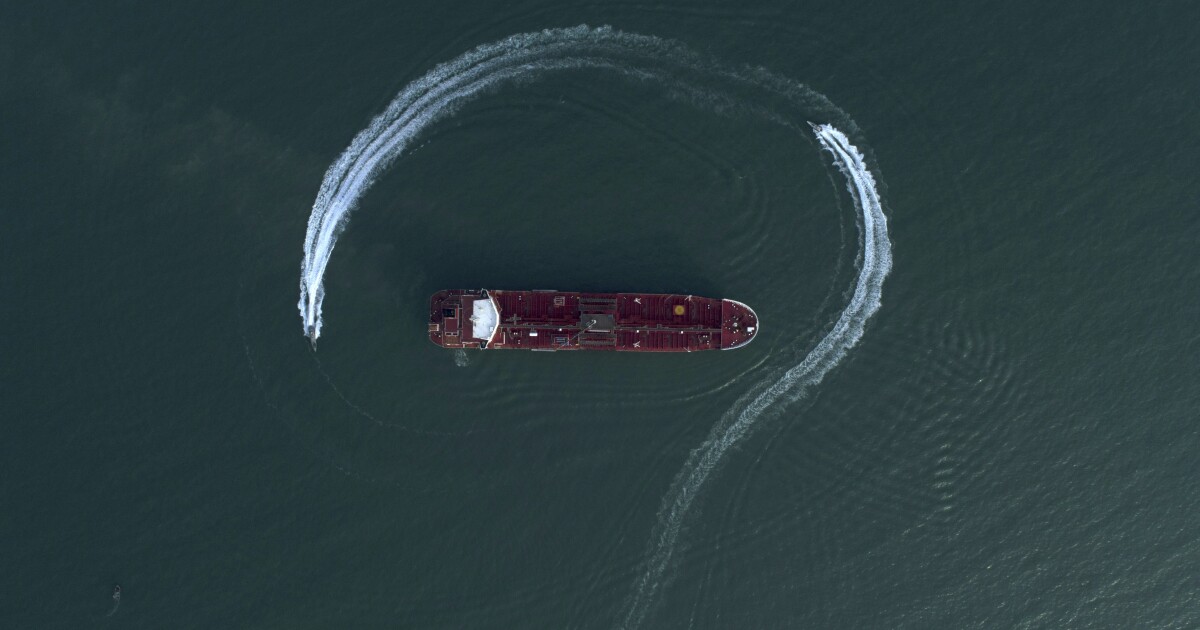

The Israel-Hamas war has prompted new fears about shipping and trade in the region, which analysts warn could push prices higher and threaten to upend commodities shipments in one of the most important energy-producing corners of the world.
Though the war itself has not yet had a direct impact on oil and gas production, markets are already reacting amid fears of expansion or a broader conflict. As of Friday afternoon, Brent crude futures jumped to more than $90 per barrel, a 5.5% rise from the previous day of trading, with West Texas Intermediate also gaining 5.5%, up to $88 per barrel.
BIDEN ADMINISTRATION ANNOUNCES WINNERS OF $7 BILLION HYDROGEN HUB PROJECTS
Brent, for its part, saw a weekly gain of 7.5%, its biggest single-week jump increase since February.
Though the International Energy Agency said this week that supplies have not been affected, the sharp escalation means “markets will remain on tenterhooks” as the crisis unfolds.
That’s also the conclusion of Container XChange, a shipping logistics company, which published a report Friday outlining the ways that a protracted war could significantly harm business and global trade.
Oil flows have not yet been affected by the war, since Israel is a modest producer. But much will depend on how long the conflict lasts, the report said, and how far hostilities are spread.
The Middle East accounts for more than one-third of the world’s seaborne oil trade, according to the IEA, meaning that any expansion of hostilities could introduce fresh risks to the area and curtail production in larger, oil producing nations.
A longer crisis that stretches beyond Israel’s borders could also disrupt or completely choke off shipping activity, including at key waypoints such as the Suez Canal and the Strait of Hormuz, both critical for commodities and container shipping.
The Suez Canal is the primary shipping route from India to the European Union, which now relies on New Delhi for refined petroleum products such as diesel and jet fuel following its ban on Russian supplies.
The Strait of Hormuz, meanwhile, is considered to be one of the world’s most important oil checkpoints, with roughly 20% of the world’s oil supply flowing through the narrow channel.
Any reduction in shipping activity here could quickly upend commodities shipping, limiting crude oil shipments as well as shipments of refined product.
Involvement from Iran could prompt the United States to tighten oil sanctions, further cutting into global supplies at a time when markets are already stretched thin.
Iran has increased its oil exports significantly so far in 2023, according to IEA data, helping lessen the pain from Russia and Saudi Arabia’s voluntary oil cuts of 1.3 million barrels per day.
A broader conflict also threatens to crater the status of the U.S.-brokered deal to normalize relations with Israel and Saudi Arabia.
Riyadh agreed to boost oil production next year in exchange for the deal, the Wall Street Journal reported last week, but in the days since, Saudi Arabia has signaled reluctance, according to Reuters.
“Any expansion of the hostilities beyond the country’s borders could introduce risks to two vital shipping choke points. The Suez Canal, a critical waterway for various commercial vessels, including container ships, may face disruptions. Similarly, the Strait of Hormuz, a backbone for oil and gas shipping, could be affected,” Christian Roeloffs, cofounder and CEO of Container xChange, told the Washington Examiner.
CLICK HERE TO READ MORE FROM THE WASHINGTON EXAMINER
“However, the extent of these effects will largely depend on the conflict’s expansion and duration,” Roeloffs added.
IEA analysts agreed. “The Middle East conflict is fraught with uncertainty and events are fast developing,” the agency wrote in its Oil Market Report. “Against a backdrop of tightly balanced oil markets anticipated by the IEA for some time, the international community will remain laser focused on risks to the region’s oil flows.”





